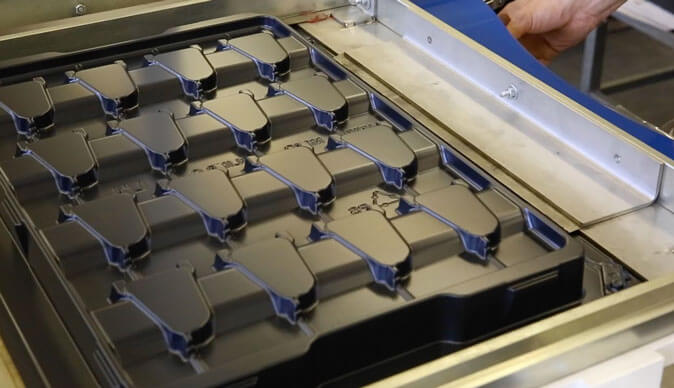Vacuum Forming
About Vacuum Forming
Vacuum forming is a type of thermoforming process used to shape thermoplastic sheets into specific forms or designs using vacuum pressure. It is a variation of the broader thermoforming process, where a vacuum is applied to draw the heated plastic sheet over a mold or template.
Here is an overview of the vacuum forming process:
- Material selection: Thermoplastic sheets, such as ABS, polycarbonate, PVC, or acrylic, are chosen based on the desired properties of the final product.
- Heating: The thermoplastic sheet is heated until it becomes pliable and soft. Heating methods can include radiant heaters, hot air, or infrared heaters.
- Placing the sheet and mold: The heated plastic sheet is placed over the mold or template. The mold can be a male mold (positive) or a female mold (negative), depending on the desired shape.
- Vacuum application: The vacuum is applied underneath the mold, creating a pressure difference. The atmospheric pressure on the top side of the sheet pushes it against the mold, conforming it to the shape.
- Cooling and solidification: After the desired shape is formed, the plastic is cooled to regain rigidity and retain the formed shape. This can be achieved through air cooling, water cooling, or other cooling methods.
- Mold separation and trimming: The vacuum is released, and the formed part is removed from the mold. Excess material or flash is trimmed off, usually through cutting or trimming processes.
Vacuum forming offers several advantages:
- Cost-effective: Vacuum forming is often more cost-effective than other manufacturing processes, such as injection moulding, making it suitable for low to medium volume production runs.
- Quick turnaround: Vacuum forming processes are typically fast, allowing for rapid production turnaround times.
- Design flexibility: Vacuum forming allows for the production of complex shapes, undercuts, and textures. It is suitable for both shallow and deep-drawn parts.
- Material options: A variety of thermoplastic materials can be used, each with different properties and characteristics, providing flexibility in material selection.
Vacuum forming is commonly used in industries such as packaging, automotive, signage, consumer goods, and more. It is a versatile and cost-effective method for producing plastic parts, especially when the requirements involve larger sizes, low to medium volumes, and moderate intricacy in shape.

Quick Enquiry
If you need help or a quote regarding any of our processes, materials or capabilities, please contact us on +44 (0)1903 235784 or complete the quick enquiry form below.
Vacuum Forming Enquiry
Why C&W Seals?
C&W Seals constantly review our activities to allow us to provide the latest products & manufacturing techniques in the marketplace. Our highly-trained staff specialise in the manufacturer of tailor-made products to meet specific customer specifications.
By regularly benchmarking our material prices we can guarantee new and current clients the best possible prices as well as bringing our clients the latest products with our forward thinking and dedicated mindset.
Need Help?
If you can't find the answer that you need, or would just like to speak to someone about any of our processes, mateials or capabilities, then please do get in touch.
Phone
Request a quote and we'll send it back within 24 hours
If you need a quote for Material Conversion, please complete our quote request form and we will send a quote back within 24 hours.

